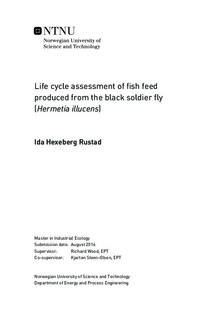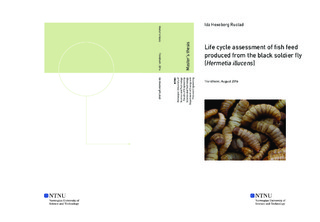| dc.description.abstract | The use of insects as feed is an emerging industry. Despite all the information on insects as a sustainable alternative, very few studies have been done on the environmental performance of insects compared to other feed ingredients. This study uses data from the insect rearing company HiProMine to perform a life cycle assessment of insect meal made of black soldier fly larvae (Hermetia illucens) which was fed pre-consumer food waste of plant origin. Fish meal is an important ingredient in salmon feed, and insect meal is a possible replacement for a growing aquaculture sector in the need of more feed. Therefore, the environmental impacts from those two feed ingredients have been compared. The global warming potential from insect meal is approximately 170 kg CO2-eq per tonne, or 500 kg CO2-eq per tonne when indirect impacts are included. Fish meal, on the other hand, has an impact of around 1400 kg CO2-eq. Other impact categories show similar favourable results for insect meal. A reason why the insect results are so low, might be that not enough data is included, but it seems likely that insect meal is a better alternative than fish meal. | |

